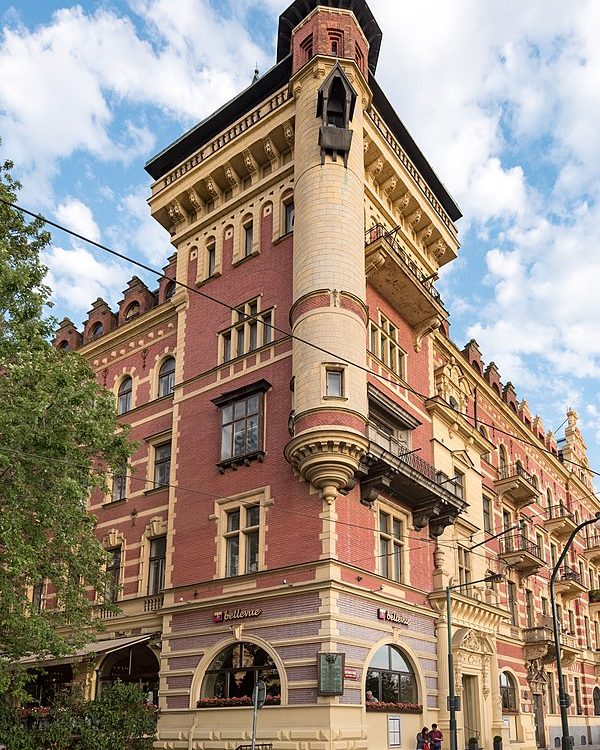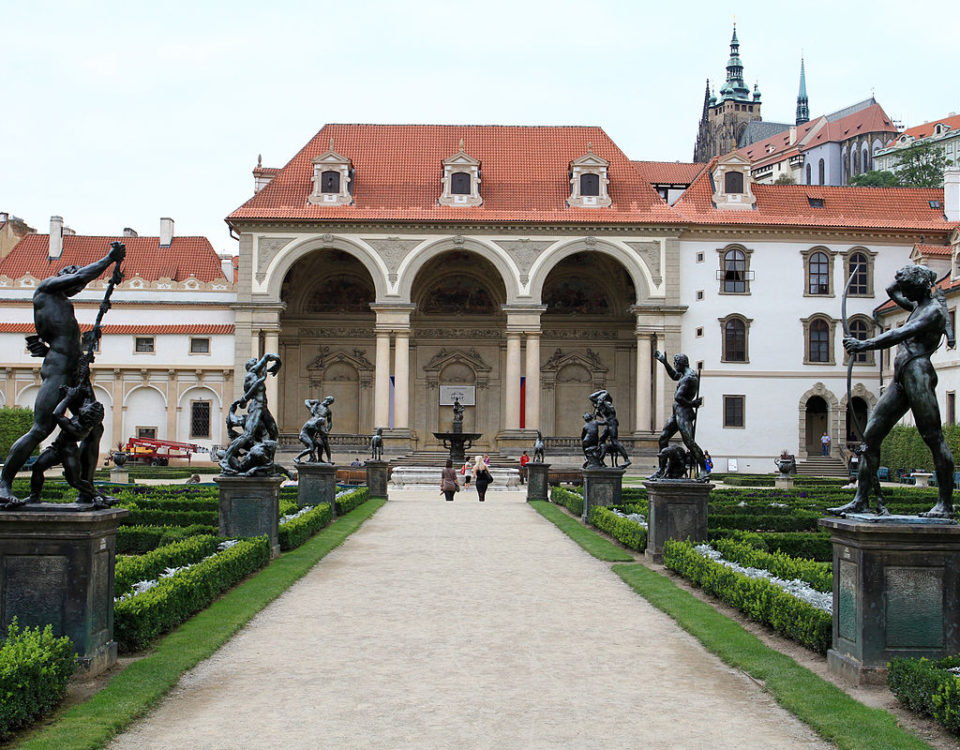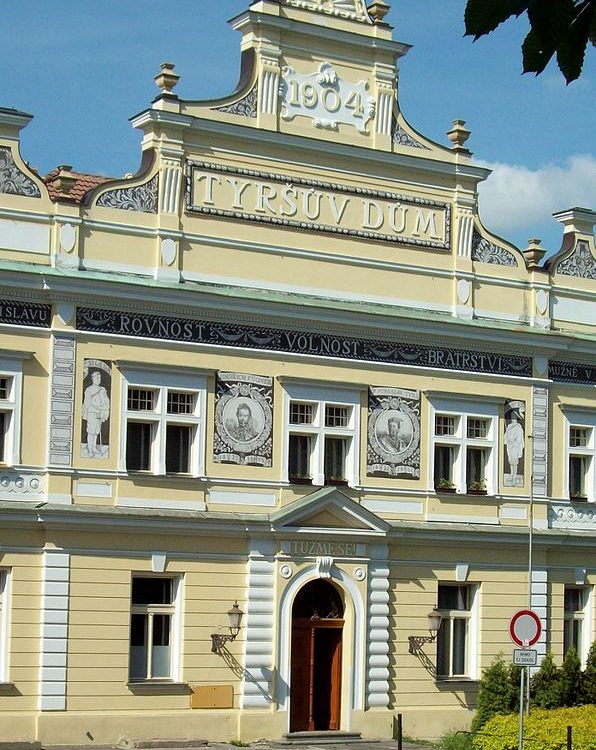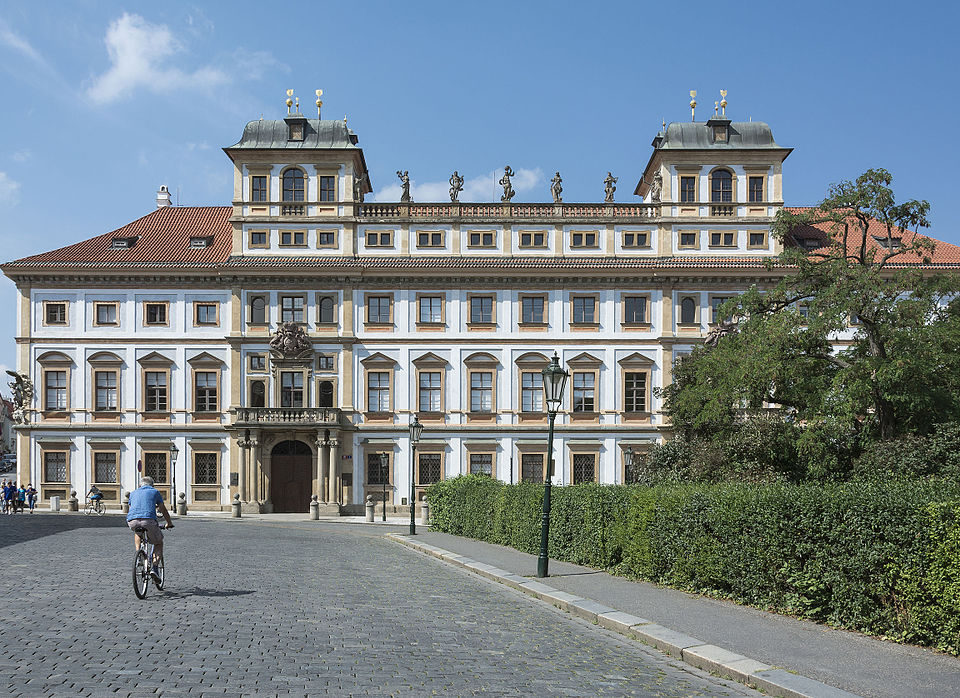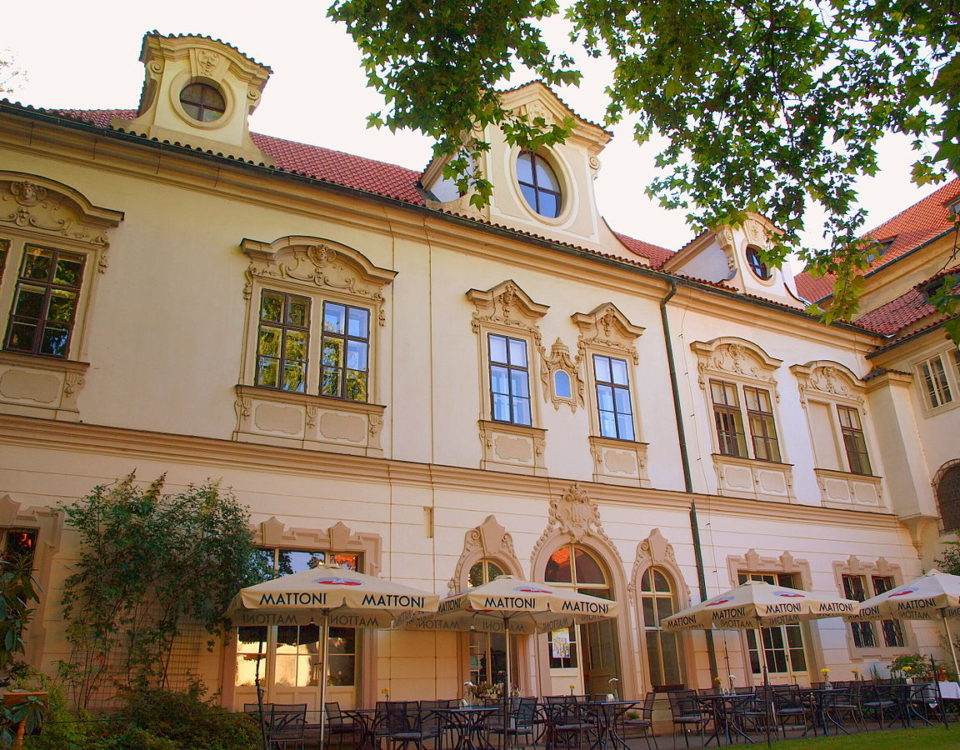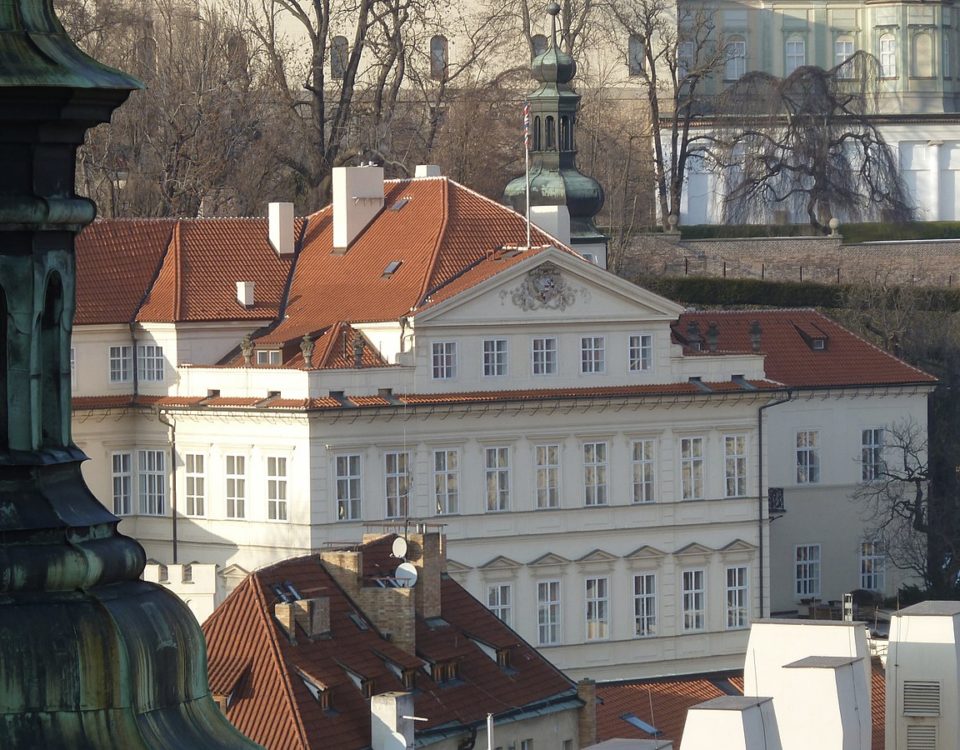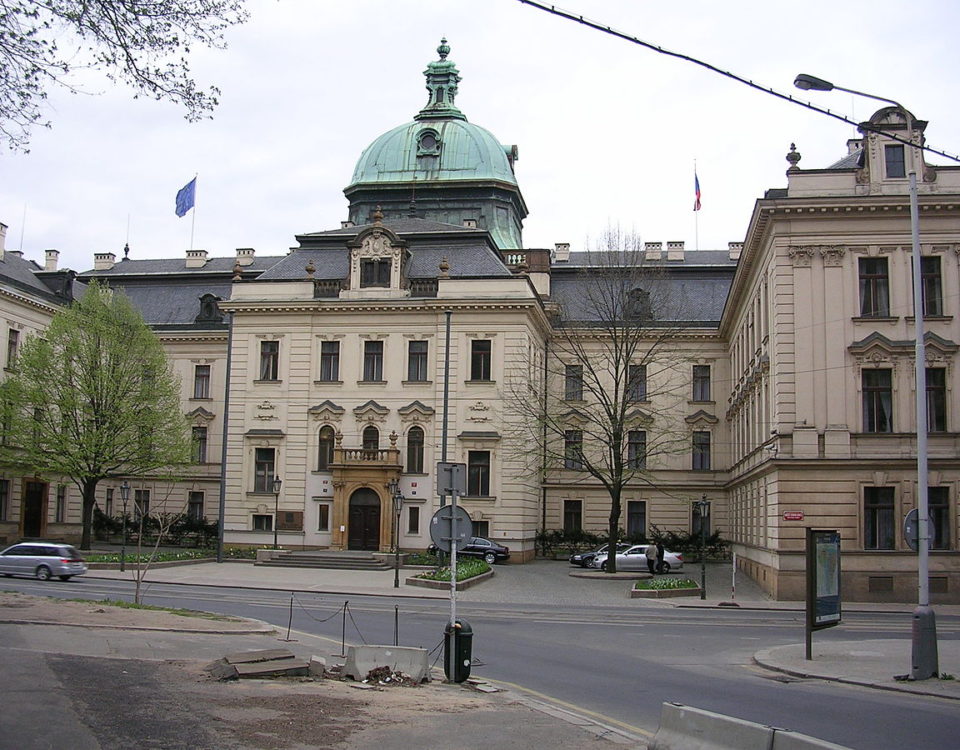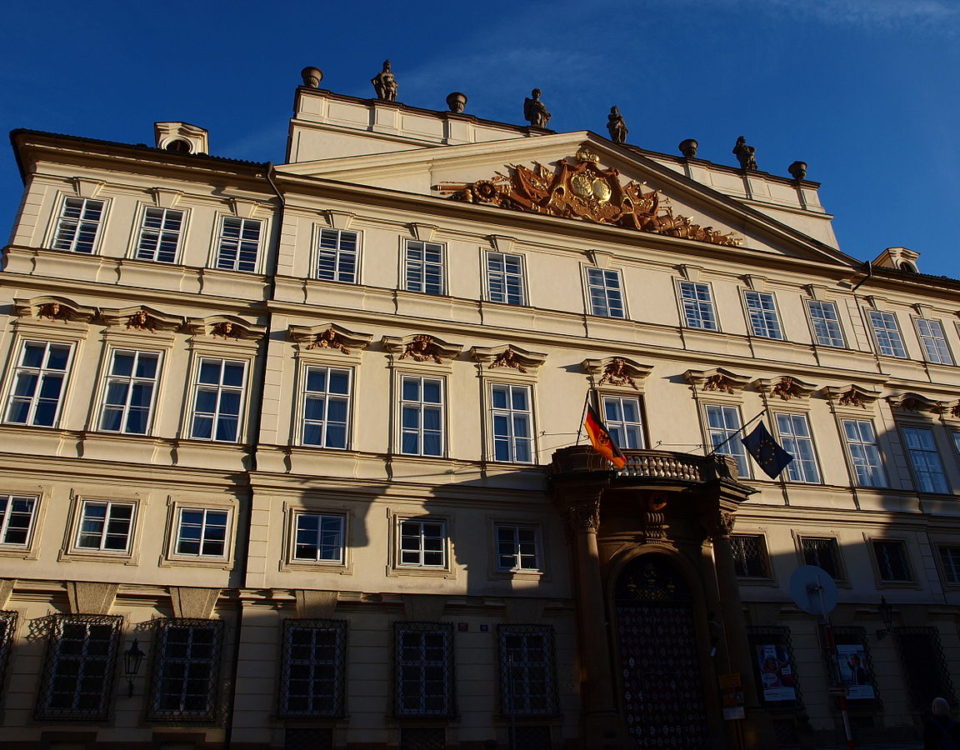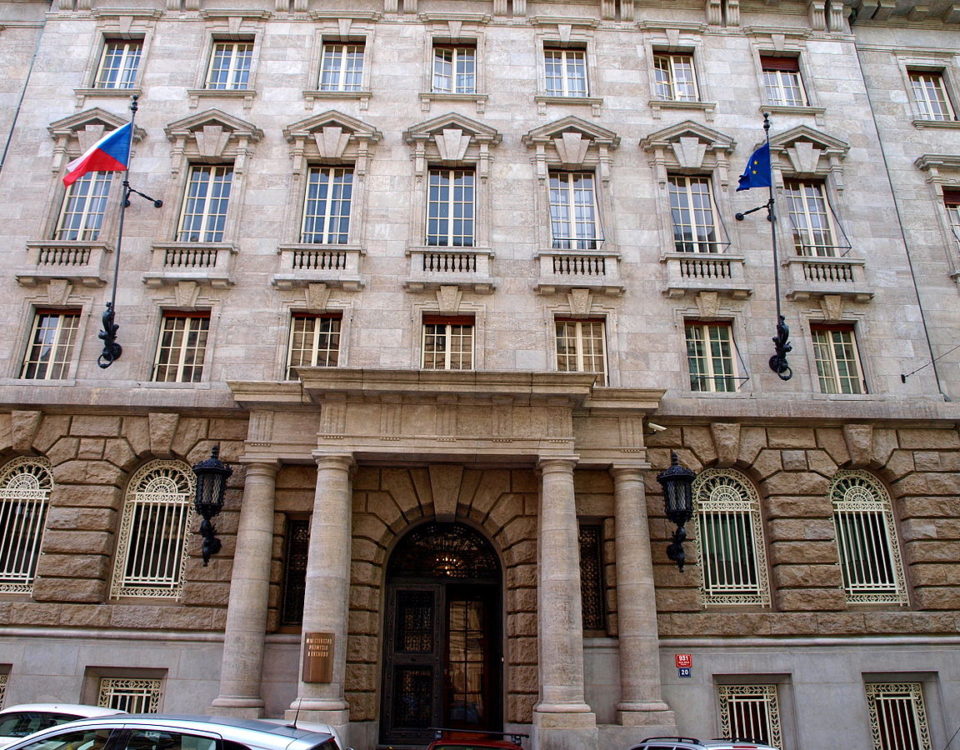December 12, 2018
The building was constructed in the Dutch Renaissance style in the 19 th century and was given the name “Bellevue” (“beautiful view”) because of its location. An exceptional panoroma of the Vltava River and Prague’s Castle District enhance the perfect harmony of excellent wines and exclusive food served in the dimmed intimate atmosphere of the luxury restaurant bearing the same name. Contacts Bellevue Smetanovo nábřeží 18 110 00 Praha 1- Staré Město Object history The Bellevue on Smetana Embankment (Smetanovo nábřeží) was named based on the fact that it has one of the most beautiful Prague views of the Vltava River and Hradčany: Bellevue is a French word meaning a “beautiful view”. The same name was given to a café that was opened there by entrepreneur Filipi after the building completion. Previously, the Papoušek’s Bath (Papouškovy lázně) used to stand there. During the construction […]
December 12, 2018
The neo-Renaissance Žofín Palace is one of the most important cultural and social centres in Prague. Concerts, conferences, and balls are held here. The Great Hall of the Žofín Palace regularly hosts the biggest personalities from the economic, political and cultural life of our country and from abroad. In November 1882 Bedřich Smetana’s cycle of symphonic poems, My Country, was performed here for the first time. Contacts Žofín Palace (Palác Žofín) Slovanský ostrov 226 110 00 Praha 1- Nové Město +420 222 924 112 Follow us on Facebook http://www.zofin.cz pokladna@zofin.cz Object history Before 1817, a spa, a dye-house, and also a pub were built on the island. In 1830, the island was bought by a miller named Václav Novotný, who built a house here in the years 1836 – 1837, and in place of the old pub he built a one-storied new-Renaissance building with a concert hall […]
December 12, 2018
This vast palace complex, the first monumental early Baroque secular building in Prague, was built between 1624 and 1630 on the site of 26 houses, 6 gardens, 2 brickworks and one plot of land for one of the most powerful and wealthiest Czech noblemen of the post-White Mountain period, Albrecht von Wallenstein (1583 – 1634). Today it is the seat of the Czech Senate. The adjacent Wallenstein Gardens are open to the public during the summer. Contacts Wallenstein Palace (Valdštejnský palác) Valdštejnské náměstí 4 118 00 Praha 1- Malá Strana +420 257 071 111 +420 257 075 707 http://www.senat.cz epodatelna@senat.cz Object history This palace is the first monumental building in style of the early Baroque in Prague. It was built between the years 1624 and 1630 at the site of 26 houses, 6 gardens, 2 brickyards and 1 building plot […]
December 12, 2018
The building of the Czech Sokol. Contacts Tyršův dům Újezd 450/40 118 00 Praha 1- Malá Strana http://www.sokol.eu/menu/34 Source: https://www.prague.eu/en/object/places/2144/tyrsuv-dum
December 12, 2018
Early Baroque building, built around 1690, underwent a total reconstruction in the 1990s, during which wall frescoes from the 17th century were discovered. After the reconstruction the palace has been used by the Ministry of Foreign Affairs. Part of the ground floor serves the public, for social events and exhibitions. Contacts Tuscany Palace Hradčanské nám. 5 118 00 Praha 1- Hradčany +420 224 181 111 http://www.mzv.cz Source: https://www.prague.eu/en/object/places/2491/tuscany-palace
December 12, 2018
The Palace is the seat of the Grand Prior of Bohemia of the Sovereign Military and Hospitaller Order of St. John of Jerusalem of Rhodos and of Malta (also known as the Knights of Malta). Close to the outer walls of the Grand Priory Palace there is the oldest and most memorable sycamore in Prague – the Beethoven sycamore. According to legend, the composer sat under this tree during his visit to Prague in 1796. Contacts The Grand Priory Palace (Velkopřevorský palác) Lázeňská 2 / Velkopřevorské náměstí 4 118 00 Praha 1- Malá Strana http://www.velkoprevorskypalac.cz/ Object history Founded together with the nearby church of the Virgin Mary under the Chain, after the return of the Bohemian knights from the 2nd crusade (1180). The present day complex was originaly a fortressed yard. The Knights of Malta were supposed to defend Christianity […]
December 12, 2018
The Chamber of Deputies of the Parliament of the Czech Republic is the lower house of the bicameral Parliament of the Czech Republic. One of its seats in the Thun Palace, built at the beginning of the 18th century. Contacts The Chamber of Deputies of the Parliament of the Czech Republic – Thun Palace Sněmovní 4 118 26 Praha 1- Malá Strana +420 257 171 111 +420 257 174 117 http://www.psp.cz posta@psp.cz Source: https://www.prague.eu/en/object/places/2223/the-chamber-of-deputies-of-the-parliament-of-the-czech-republic-thun-palace
December 12, 2018
This majestic neo-Baroque building – the seat of the Czech government and the Office of the Government – is known to the public as the Straka Academy. After its completion in 1896, it served as a student dormitory for impoverished children of Czech noble families, per the wishes of Count Jan Petr Straka. After WWII, it was confiscated for the needs of the Czechoslovak government and since 1993, the Straka Academy has been the seat of the government of the Czech Republic. The property also has an extensive garden. Contacts Straka Academy and Gardens (Strakova akademie) nábřeží Edvarda Beneše 4 118 01 Praha 1- Malá Strana http://www.vlada.cz/ Object history In 1710, count Jan Petr Straka, lord of Nedabylice and Libčany, stipulated in his last will that after his family dies out, the family property is to be used for educating […]
December 12, 2018
This Baroque palace, located at the eastern end of the Prague Castle complex at the entrance by the Old Castle Steps, is owned by the Lobkowicz Czech noble family and as such is the only privately owned part of Prague Castle. Highlights from the Museum include works by masters such as Canaletto, Brueghel the Elder, Cranach, and Velázquez; an impressive display of family and royal portraits; fine porcelain, ceramics and rare decorative arts from the 16th to 20th centuries; an extensive collection of rifles from the 16th to 18th centuries; and musical instruments and original scores and manuscripts by Beethoven and Mozart, including Beethoven’s 4th and 5th symphonies and Mozart’s re-orchestration of Handel’s Messiah. The outstanding audio tour provides a personal and engaging introduction to the tumultuous history of the Czech lands through the centuries. There are daily mid-day classical concerts; […]
December 5, 2018
This monumental neo-Classicist building was erected between 1923 and 1929 by the Prague banker and head of the financial council Dr. Julius Petschek for his bank. Immediately after the Nazi occupation of Prague in 1939, the building was taken over by the Gestapo. Thousands of Czechs were interrogated and tortured here. Shortly after the war, a memorial was installed in the building’s basement. Contacts Petschek Palace (Petschkův palác (Pečkárna)) Politických vězňů 20 110 00 Praha 1- Nové Město +420 224 262 874 +420 224 261 508 http://www.zasvobodu.cz/odbojove-tradice/pamatnik-peckarna/ csbspraha@volny.cz Object history A monumental neo-Classicist building on the corner of the streets Politických vězňů and Washingtonova was built by a Prague banker and supreme financial council dr. Julius Petschek for his bank named Bankovní dům Petschek a spol. (Petschek and co. Banking House). He established the bank in 1920 together with his son Walter P., […]

